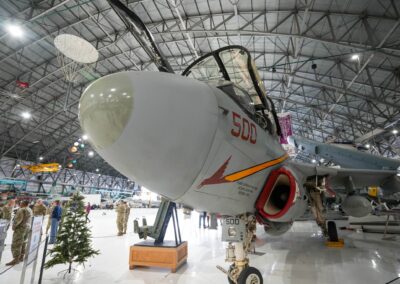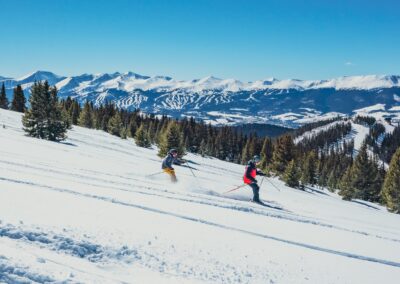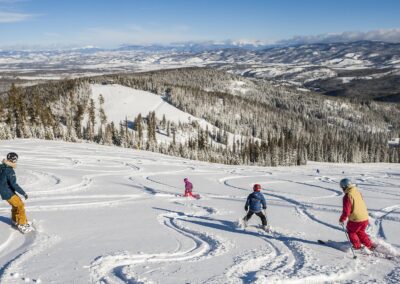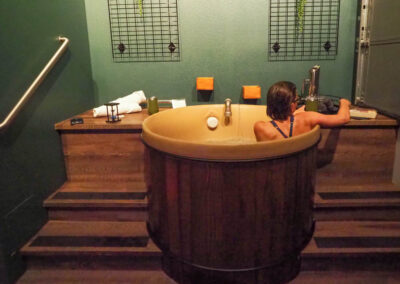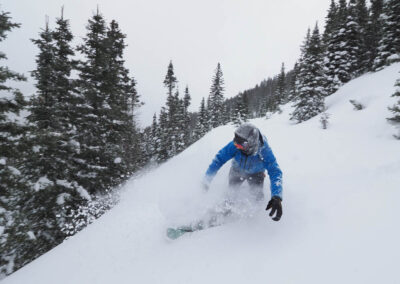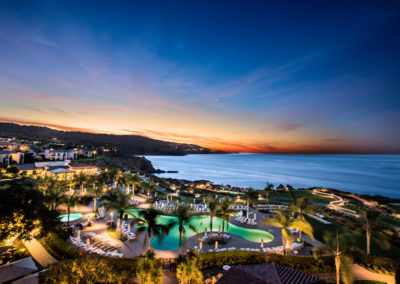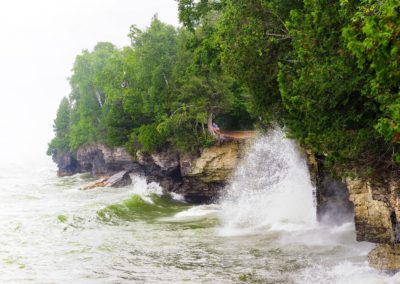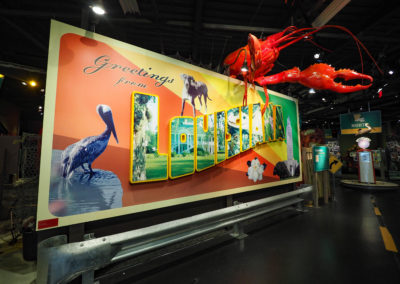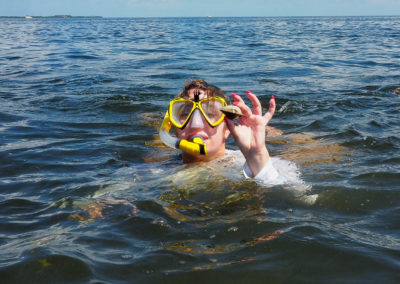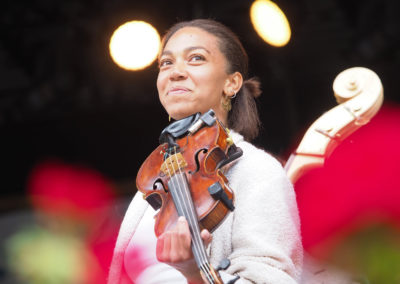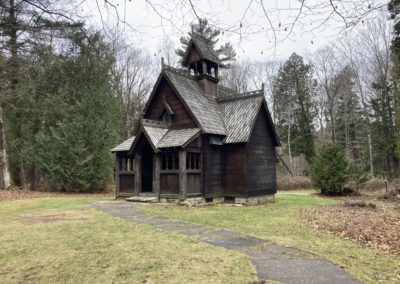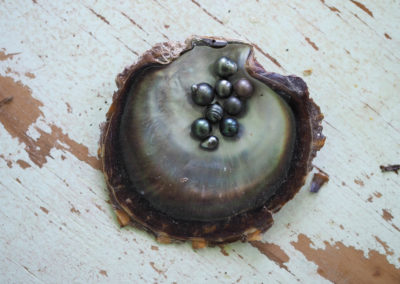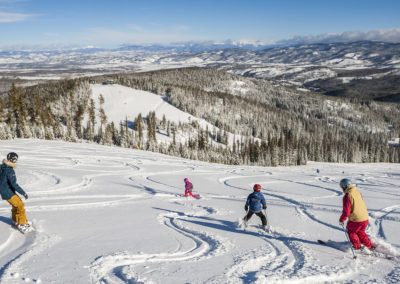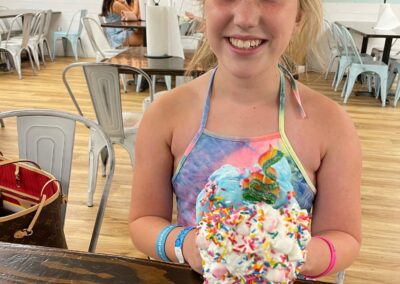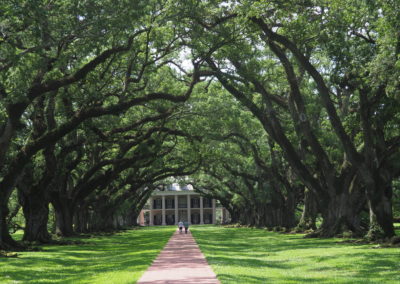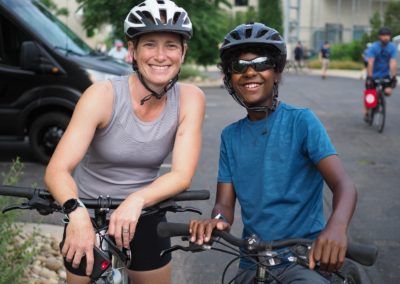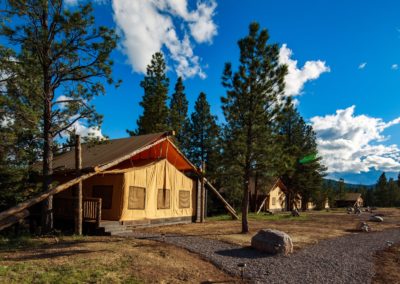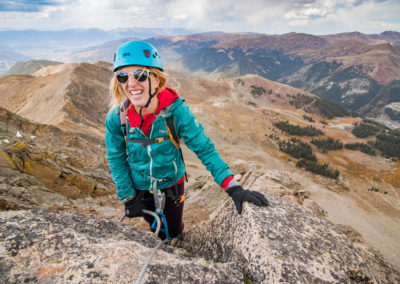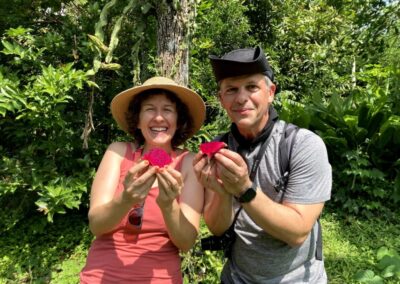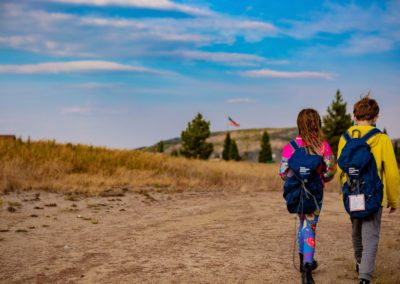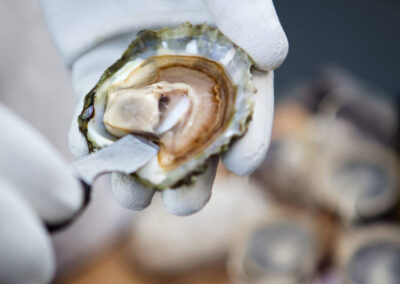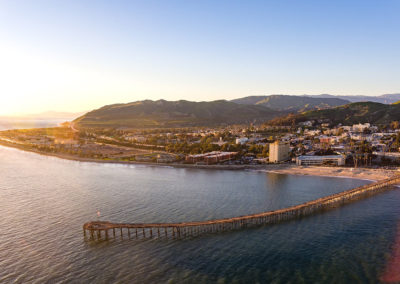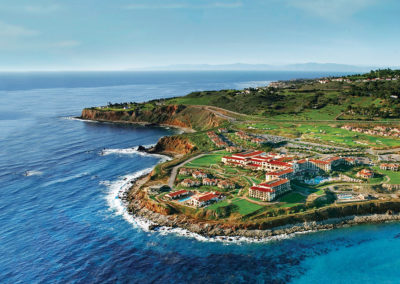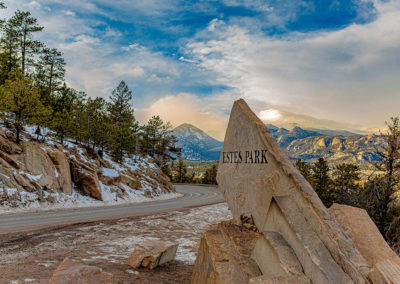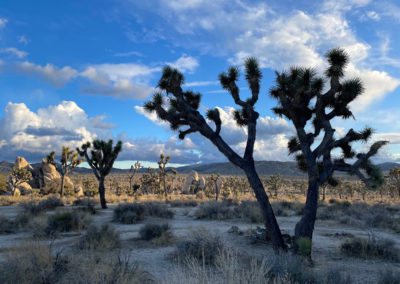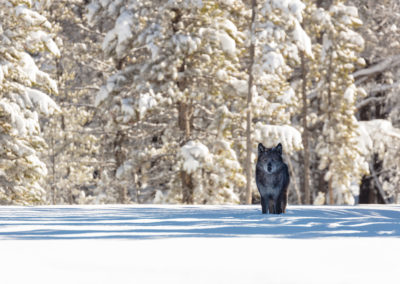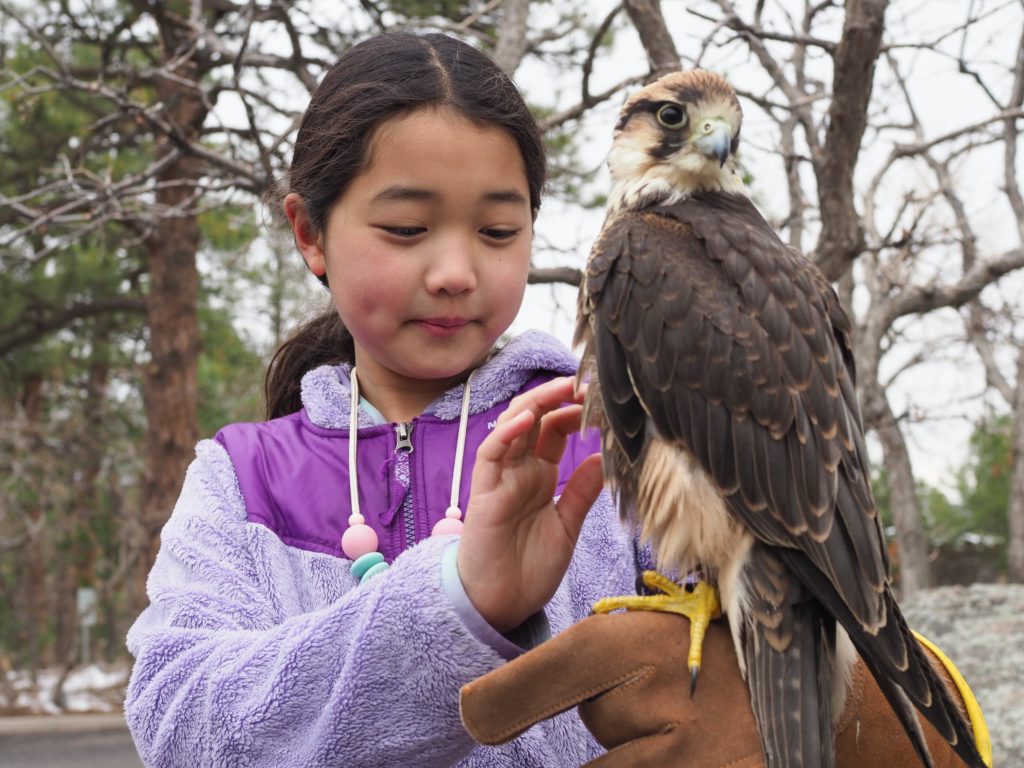
Caroline Liu holds Lance the falcon during the beginner falconry class at the Broadmoor. Pam LeBlanc photo
Deanna Curtis walks along a hillside trail in Colorado Springs, a hawk the size and color of a leather football flapping low, just ahead of her.
Maverick, a Harris’s hawk, perches high in a branch, pauses, then swoops back toward Curtis, a master falconer who teaches the beginner falconry class here at The Broadmoor.
Together, they’re demonstrating a sport that traces its roots to Mongolia about 3,000 years ago. For centuries, falconers have used trained raptors to hunt wild quarry like squirrels or rabbits. Although we’re not hunting in class today, we’re getting a glimpse of a sport that peaked during Medieval times.
Once popular among aristocracy, the popularity of falconry faded with the invention of firearms. Today, a small but enthusiastic community of falconers still practices the sport.

Master falconer Deanna Curtis leads the beginner falconry class at the Broadmoor. Pam LeBlanc photo
Our class began on a blustery spring morning with an introduction to The Broadmoor’s feathered staff: A collection of falcons, hawks and owls housed in indoor and outdoor enclosures on the grounds of the historic hotel.
RELATED: When the snow melts and winter crowds leave, these Colorado spots are the coolest
A peregrine falcon named Earl gazed at us with dark, marble-sized eyes. According to the Cornell Lab of Ornithology, peregrine falcons can climb to heights of more than half a mile, then reach speeds of 200 miles per hour as they dive after prey –– typically other birds like pigeons or even ducks. In a dive, they’re the fastest animal on the planet.
A saker falcon named Dassi looked to me like she was wearing fluffy pantaloons. She once worked at an airport, Curtis said, keeping the runway free of birds that could interfere with airplane traffic. Today she’s enjoying retirement, and females like her are considered more valuable in falconry because they’re bigger, stronger and catch more desirable prey than their male counterparts.
Falconry was unregulated in the United States until the 1970s. Today, you must pass a test and train with a sponsor to become a master falconer in Colorado. Curtis earned her master falconer status 21 years ago and joined the staff at the Broadmoor in 2018.

Maverick the Harris’ hawk eats a mouse as a reward during the falconry class. Pam LeBlanc photo
Curtis’s personal bird, Karma, a red-tailed hawk like the ones I frequently see atop light poles up and down MoPac Boulevard in Austin, made an appearance next. The falconer captured the bird in 2007, trained it in less than three weeks, and has hunted with it for 14 seasons.
Curtis also let us in on some special news: The next day, Earth Day, she planned to attach a satellite transmitter to the Karma’s back and release her to the wild. A red-tailed hawk like Karma can live 20 years.
“I see it as a full circle moment,” Curtis said, a little wistfully.
Curtis said Karma was skinny when she trapped her as a migrant. Now she knows how to hunt, and should survive just fine on her own. One thing Curtis does know: She will miss her bird companion more than the bird will miss her.
“She doesn’t have any feelings or attachments to me, like I do to her,” Curtis said.
After meeting half a dozen birds living outdoors, we headed to the Broadmoor’s “mew,” an indoor stable of sorts, with separate stalls for individual raptors.
First Curtis brought out a beautiful white barn owl named Cupid. Barn owls, with soft feathers that funnel sound into their ears, can hear a mouse squeak up to a quarter of a mile away. Next, a Eurasian eagle-owl named Layla flew low across the room, showing off her 6-foot wingspan before landing precisely on Curtis’ fist, then eating a small (dead) white mouse as a reward.
We loaded into a minivan for the main event –– a trip to the hillside to watch Maverick, the Harris’s hawk, fly. That’s when Eric Liu, who was taking the class along with his wife and three children, told me that his kids were the ones who convinced him to sign the family up for the class.
RELATED: Becoming a birder at Galveston’s FeatherFest
At a trailhead, Curtis brought out a carrying cage with Maverick inside. He was wearing what looked like a vintage pilot’s helmet, designed to cover his eyes and keep him calm. Curtis removed the hood, but left on the bird’s jesses –– leather straps attached to its ankles –– that allow the falconer to control or tether the bird.

Maverick the Harris’ hawk perches in a tree during the beginner falconry class at the Broadmoor. Photo by Pam LeBlanc
Harris’s hawks, Curtis explained, are desert birds nicknamed the “Wolves of the Sky” because they hunt in packs, working together to bring in prey.
She let Maverick fly, and he soared ahead, then came back, again and again. At one point, we lined up in two rows facing each other, as if we were about to do an old-fashioned line dance. Curtis called Maverick, who sailed right between us in a demonstration of flight precision that would impress the U.S. Air Force Thunderbirds.
After 45 minutes, we headed back to the trailhead with Maverick. Curtis replaced his leather hood and exchanged the bird for Lance, a lanner falcon. We each get a turn to hold Lance on our fist, and he felt more like a papaya-shaped puffball than a bird that could swoop from the sky and scoop up a vole.
Caroline Liu, Eric’s daughter, described the experience perfectly: “He’s not like air or paper, but not like a tree branch either,” she said. “He’s pretty light. You can feel his weight but he’s not heavy.”
Caroline gently stroked Lance’s gray and brown feathers. The bird seemed unperturbed. The girl, on the other hand, could barely contain her excitement. The Broadmoor may have inspired one in the next generation of falconers.
If You Go

Getting there:

Stay:
Do:
Eat & Drink:














